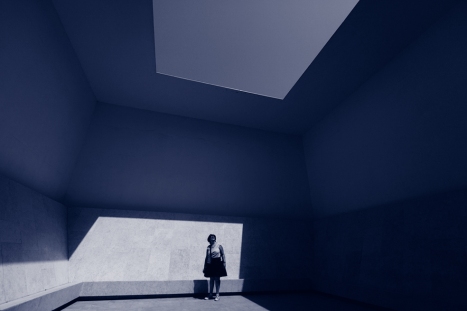We have between 60,000 and 80,000 thoughts a day. That’s a thought every 1.2 seconds. Based on this fact we can compare our mind with a very busy bee hive. Although I would like to emphasize that we are not our thoughts – we have thoughts. Just like a cell phone is not our texts … it receives texts, but they are not the phone itself. We have thoughts, but we are not our thoughts. When we discuss the mental stillness, we imagine the most reduced mental activity as possible. Thus, we think we should not think at all. However, that’s like trying to stop the flow of the river with our bare hands. It is unachievable. This simple realization can be our first step to our mental stillness. Through becoming fully aware of this as a fact, we can step into shoes of the observer of our thoughts, to become not reactive towards them.
A quiet mind is one in which the ego does not obstruct the fluency of the things that come into our senses and up through our dreams. Our business in living is to become fluent with the life we are living. John Cage
Nowadays there is available an enormous amount of information on ways how to silence your mind. No wonder then, that there is also a lot of confusion between people. Maybe you as well noticed a great offers of becoming enlightened in one week during your trip on Bali for a great price arranged by your local yoga center or achieving great productivity just by 10 minutes meditation each day offered by some great known coach. In a fact what we are witnessing right now in our society is that the silence has become a product, a business and people have started to hunt for a relaxing moments. How can you manage the silence of your mind if there is a subconscious thought that you have only 45 minutes for it?

I know this is a broader problem of our society and it is a problem of economical pressure of time, but we really need to approach the silence as a process. You could argue with me that it is here all the time and it is nothing special. You are right, but if it would be so easy to achieve that, people would not invest such an amount of money into it right? Why do we do that? Because we forgot … we forgot how to be in silence. One of the most recommended ways to go is a meditation practice. Meditation is a very nice way for drawing your attention to your internal processes. It is good for a better understanding mind’s activities as well. Probably the best known technique is a visualization. However, I keep questioning the value of it when it comes to calming down your mind and I would like to share with you why.
One of our most common complaints is that silence no longer exists. We consider this criminal. But the actual problem lies deeper. Society is overstocked with people in full activity. So there’s a social reason for there being no more silence. Nevertheless we still think we all have the right to some silence, some privacy. Silence is a space around us that we think we have earned. Within that space our bodies can move and circulate in freedom and safety. If someone else robs us of that space, that silence, we experience it as a social offence, an aggresive violation. Dick Raaijmakers
Many visualization scripts invite you to imagine yourself in a safe, soothing natural environment like a sunny beach or wooded forest, where you can tune into the sights, sounds and smells of that special place. You are free to roam around this space and see what arises in your mind. Be open to what you see, and know that this place always exists for you to visit. In summary you are visualizing the perfect place to be and beside that you should observe your thoughts. Is that not too much? Do not take me wrong, it is a very good technique for obtaining a better and faster ability to concentrate and it will for sure affect your body in a good way. However, I likely see it as a certain violation or almost something unnatural to pretend that I am somewhere else than I really am. Don’t you?

Nature is beautiful, yet the unimaginable energy inheres behind its beauty. Its beauty uplifts our emotion, and resonant in our heart, yet sometimes shows its threatening expression. The installation comprised artificial smoke hanging in the air with beams of light streaming through.n
And I am wondering how do you want to become silent here and now if you will travel in your mind somewhere else? Is that not contradictory in its basics if we want to become only observers? My point is that we should focus rather on a situation that we are in right now. Denying it and replacing it with visions it is not the way to go. Did you ever try to observe and focus on your natural breath and on anything else? What would happen? You would probably realize that it is difficult (to solely focus on your breath without trying to manipulate it). Such a simple activity to start with and yet not easy for performing at all. However, once you will manage that, you will be able to discover that your body become silent as well. And as we can see here is almost impossible to separate silence in the body from the calmness of our mind. After all, I chose this distinction to prove this argument from both directions. I am aware that there is not universal rule for everybody what should be the right way of achieving of silence. I can always speak out just from my personal experience as you can do so.
Silence is in any case an important element in the rhythm of performance. It’s all very subjective: onem inute of silence on stage is quite different from one minute’s silence in real life. You should sometimes try, in this respect, to go beyond the limits of what’s acceptable to an audience. Peter Van Kraaij
Silence in the cinema is always a technical thing, while silence in the theatre always comes from actor. Every actor is silent in a different way. I find an actor’s non speaking extra ordinarily fascinating. Peter Van Kraaij
